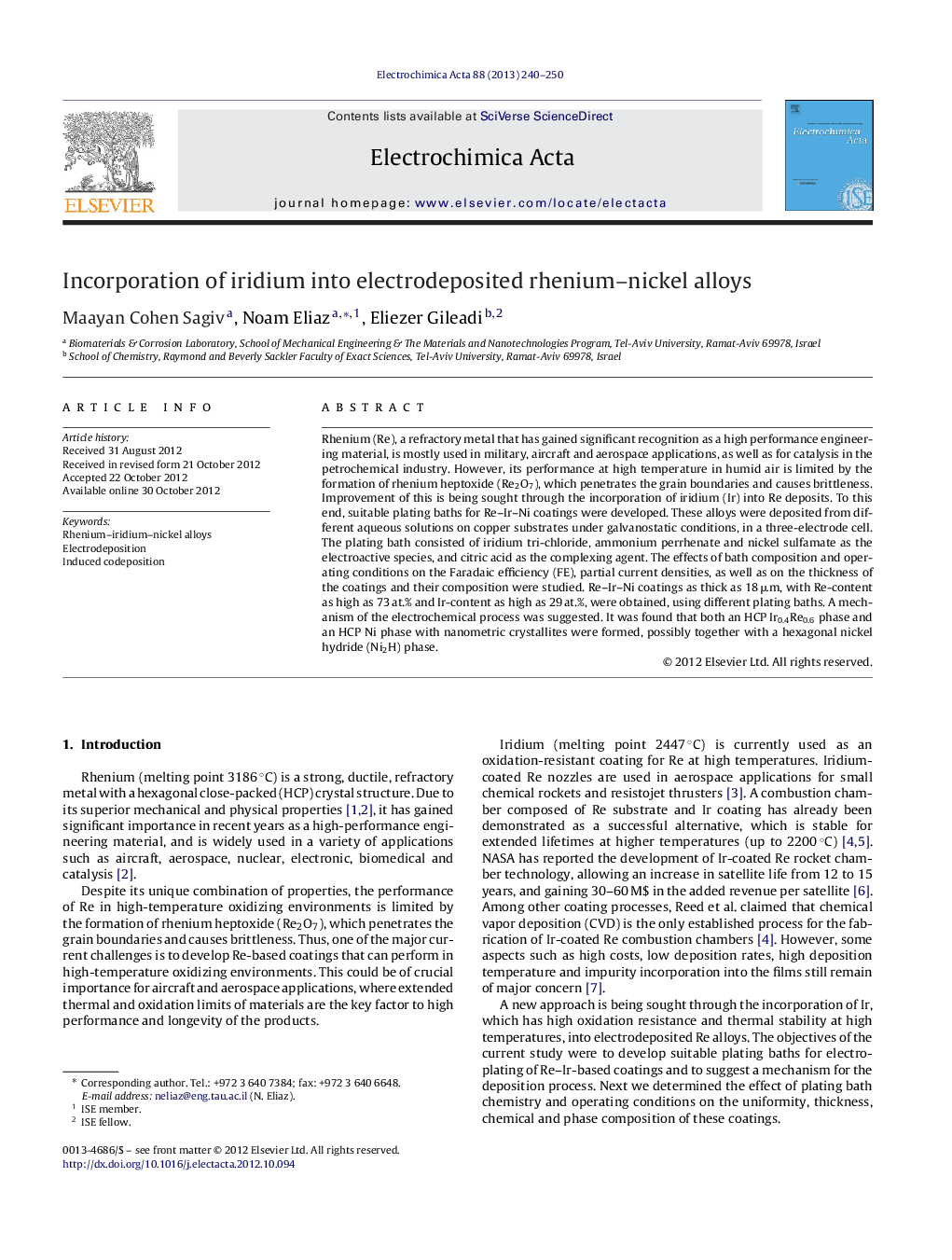| Article ID | Journal | Published Year | Pages | File Type |
|---|---|---|---|---|
| 187698 | Electrochimica Acta | 2013 | 11 Pages |
Rhenium (Re), a refractory metal that has gained significant recognition as a high performance engineering material, is mostly used in military, aircraft and aerospace applications, as well as for catalysis in the petrochemical industry. However, its performance at high temperature in humid air is limited by the formation of rhenium heptoxide (Re2O7), which penetrates the grain boundaries and causes brittleness. Improvement of this is being sought through the incorporation of iridium (Ir) into Re deposits. To this end, suitable plating baths for Re–Ir–Ni coatings were developed. These alloys were deposited from different aqueous solutions on copper substrates under galvanostatic conditions, in a three-electrode cell. The plating bath consisted of iridium tri-chloride, ammonium perrhenate and nickel sulfamate as the electroactive species, and citric acid as the complexing agent. The effects of bath composition and operating conditions on the Faradaic efficiency (FE), partial current densities, as well as on the thickness of the coatings and their composition were studied. Re–Ir–Ni coatings as thick as 18 μm, with Re-content as high as 73 at.% and Ir-content as high as 29 at.%, were obtained, using different plating baths. A mechanism of the electrochemical process was suggested. It was found that both an HCP Ir0.4Re0.6 phase and an HCP Ni phase with nanometric crystallites were formed, possibly together with a hexagonal nickel hydride (Ni2H) phase.
